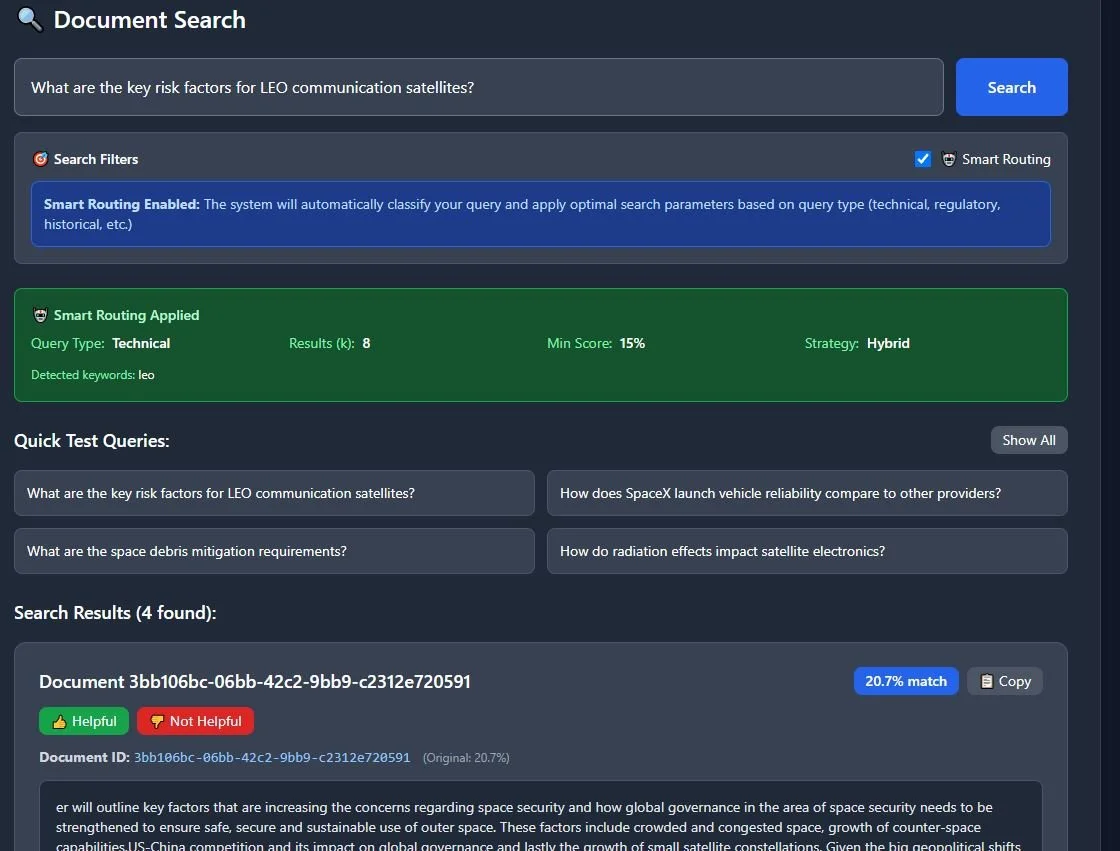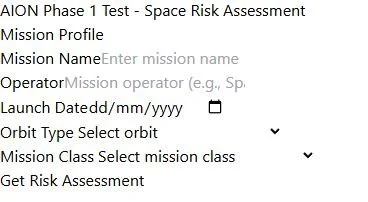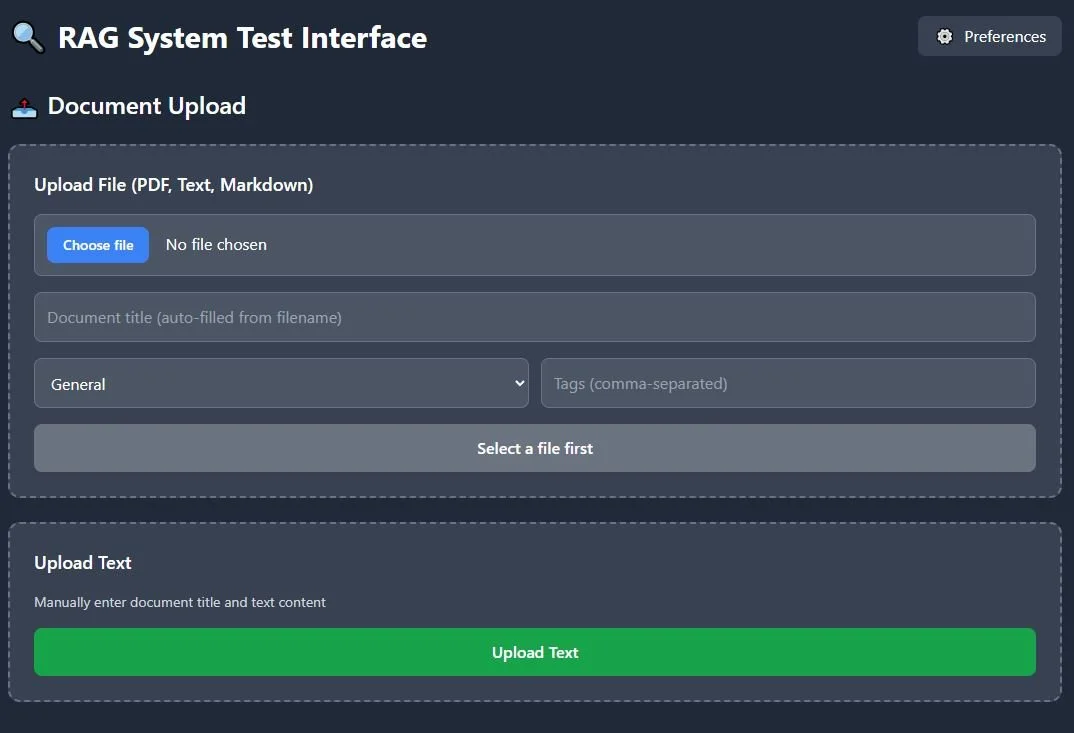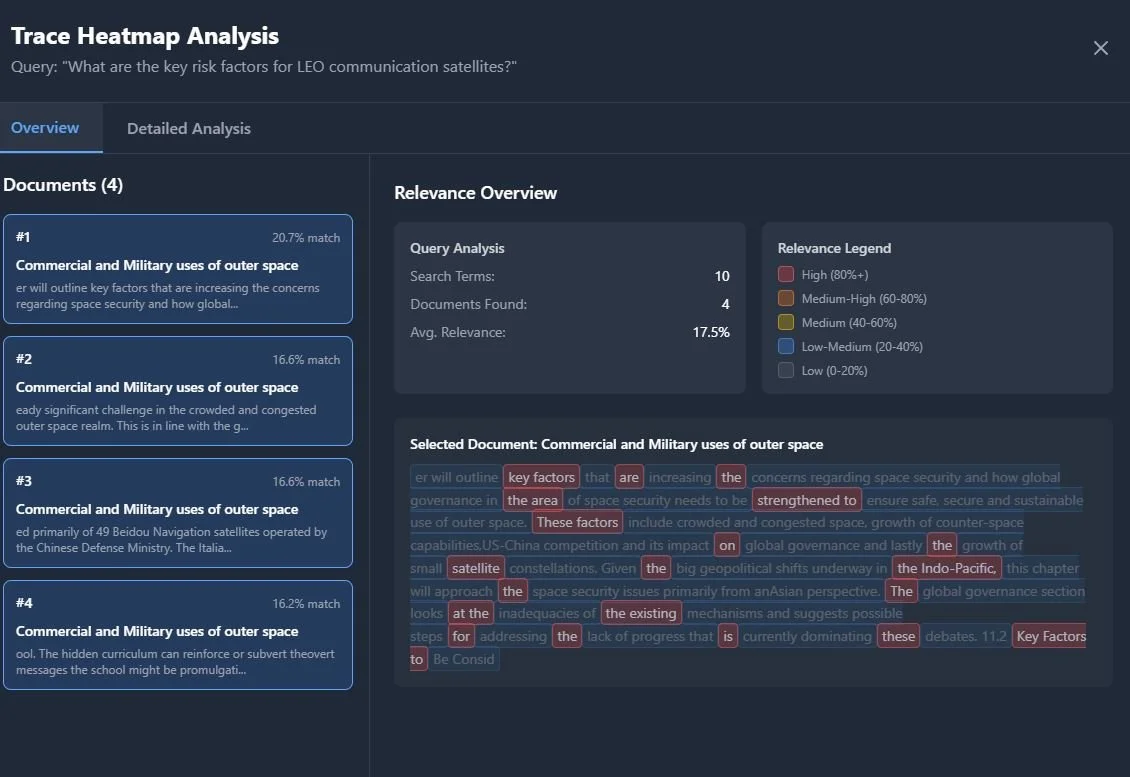AION: Space Risk Assessment Engine - Phase 1
Why I Started
After attending fintech and space conferences, I wanted to connect the ideas I was hearing with something practical.
AION began as a curiosity project — a way to learn how risk, data, and AI could come together in the space industry.
It isn’t a company or a product. It’s a sandbox for learning: I build, test, break, and rebuild to understand how systems like space insurance and orbital analytics might actually work.
What I Set Out to Build
The goal of Phase 1 was simple:
Take a satellite mission, score its risk, price its insurance, and explain why.
That meant creating:
✅ API contracts — stable, validated endpoints for missions, scores, and pricing.
✅ A retrieval system (RAG) — to search through documents and show where each risk factor came from.
✅ A transparent UI — where results were explainable, not black-box.
I also wanted everything to run locally through Docker in under three seconds.
If it could do that — and tell me why a mission scored 72 instead of 85 — Phase 1 would be complete.
1️⃣ Mission Input Interface — Enter a satellite profile and select orbit/class.
2️⃣ Assessment Result — Risk = 72 | Confidence = 62 % | Premium ≈ $1.28 M.
3️⃣ RAG Upload — Upload PDFs or notes; system tags and embeds them.
4️⃣ Smart Search — Ask: “What are key risk factors for LEO satellites?”
5️⃣ Heatmap View — Visual relevance highlights show why the answer appears.
What Went Well
Full working loop. The app can score and price a mission in under three seconds.
Explainability first. Every result shows its sources and reasoning.
End-to-end integration. Backend ↔ Frontend ↔ Database ↔ UI now talk fluently.
Workflow discipline. I learned to structure projects in phases, document endpoints, and validate inputs like a professional build.
Coding growth. Building this with FastAPI, Next.js, and Docker taught me more about engineering logic than any course so far.
Challenges & Fixes
Every phase exposed a new gap in my understanding — and that was the point.
CORS errors: fixed with FastAPI middleware.
Docker caching: rebuilt containers with
--buildto reflect code updates.Database migrations: corrected Alembic paths and built a fallback SQL setup.
Tailwind styling not updating: cleaned config paths.
PDF titles missing in search results: surfaced document metadata in responses.
Tools I Used
🧠 FastAPI + PostgreSQL for the backend
⚙️ Next.js + TypeScript + Tailwind CSS for the frontend
📦 Docker Compose for local orchestration
🤖 Cursor as my AI-assisted code editor
I discovered it through the developer community on X (formerly Twitter), where I come across the latest tools from developers. Cursor helps me think faster and experiment more—it’s like having a silent coding partner that keeps me learning.
My workflow is simple: I read/learn something → have an idea → try building it → learn through debugging.
Each step teaches me something about space tech, AI, and my own problem-solving style.
Cursor integrated chat and editor.
What I Learned
Phase 1 taught me that:
Building forces clarity.
A clear UI is as important as accurate data.
Every technical barrier (CORS, caching, schema errors) is an opportunity to learn a concept properly.
Above all, I learnt that explaining your logic is a feature, not an afterthought.
What’s Next (Phase 2)
Phase 2 will focus on:
Integrating real orbital data — debris, weather, mission classes.
Experimenting with Bayesian and Monte-Carlo models for risk.
Expanding explainability dashboards with clearer visuals and exports.
Making the tool modular for future AI-driven insurance experiments.






